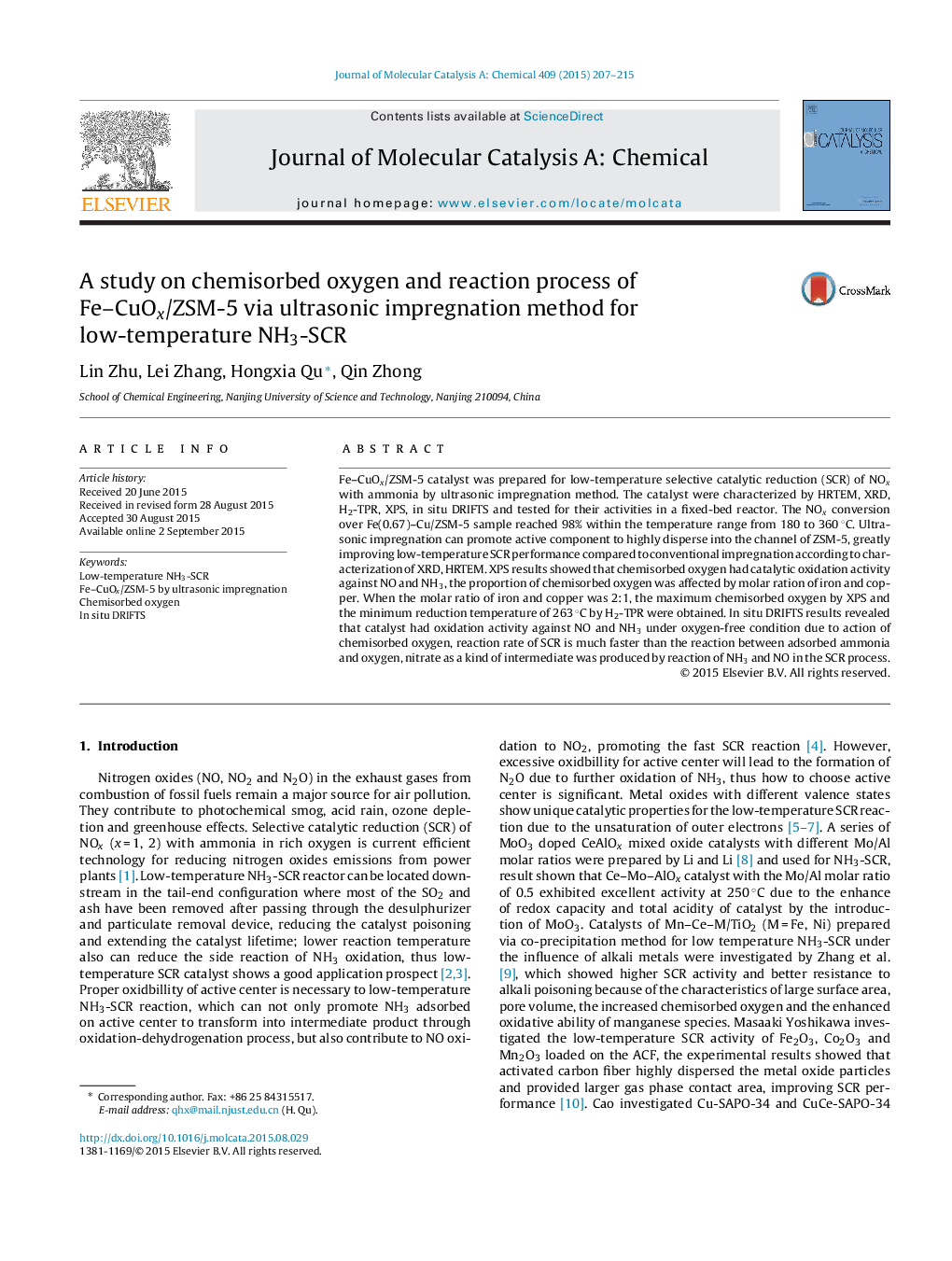| Article ID | Journal | Published Year | Pages | File Type |
|---|---|---|---|---|
| 64942 | Journal of Molecular Catalysis A: Chemical | 2015 | 9 Pages |
•We prepared Fe–CuOx/ZSM-5 via ultrasonic impregnation method and employed it for NH3-SCR.•NOx conversion of Fe(0.67)–Cu/ZSM-5 was over 98% within the temperature range from 180 to 360 °C.•Ultrasonic impregnation can promote high dispersion of active component on catalyst surface.•Catalyst had oxidation activity to NO and NH3 in the absence of O2 due to action of chemisorbed oxygen.
Fe–CuOx/ZSM-5 catalyst was prepared for low-temperature selective catalytic reduction (SCR) of NOx with ammonia by ultrasonic impregnation method. The catalyst were characterized by HRTEM, XRD, H2-TPR, XPS, in situ DRIFTS and tested for their activities in a fixed-bed reactor. The NOx conversion over Fe(0.67)–Cu/ZSM-5 sample reached 98% within the temperature range from 180 to 360 °C. Ultrasonic impregnation can promote active component to highly disperse into the channel of ZSM-5, greatly improving low-temperature SCR performance compared to conventional impregnation according to characterization of XRD, HRTEM. XPS results showed that chemisorbed oxygen had catalytic oxidation activity against NO and NH3, the proportion of chemisorbed oxygen was affected by molar ration of iron and copper. When the molar ratio of iron and copper was 2:1, the maximum chemisorbed oxygen by XPS and the minimum reduction temperature of 263 °C by H2-TPR were obtained. In situ DRIFTS results revealed that catalyst had oxidation activity against NO and NH3 under oxygen-free condition due to action of chemisorbed oxygen, reaction rate of SCR is much faster than the reaction between adsorbed ammonia and oxygen, nitrate as a kind of intermediate was produced by reaction of NH3 and NO in the SCR process.
Graphical abstractFigure optionsDownload full-size imageDownload high-quality image (135 K)Download as PowerPoint slide
